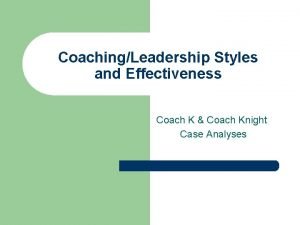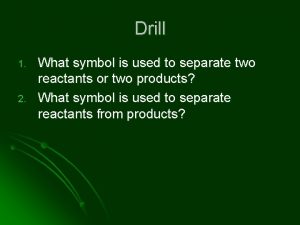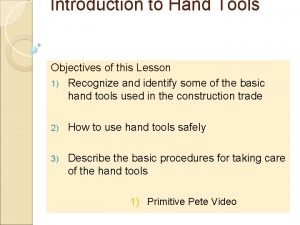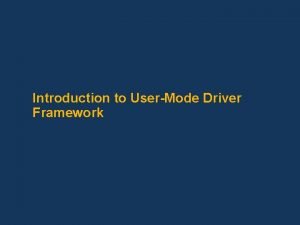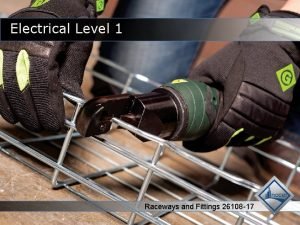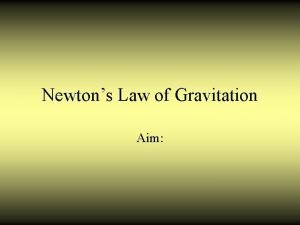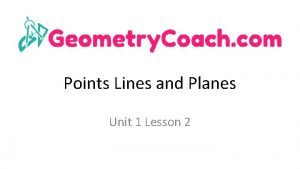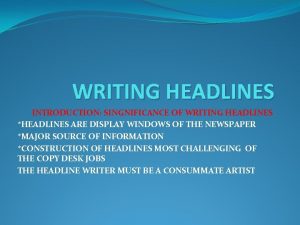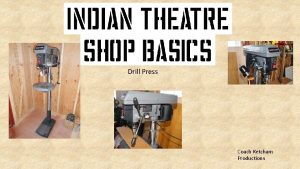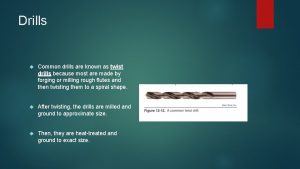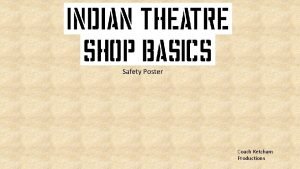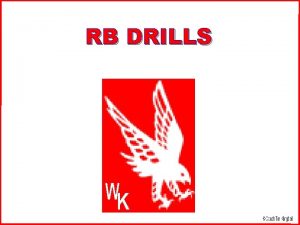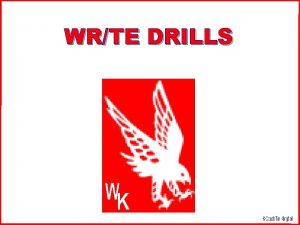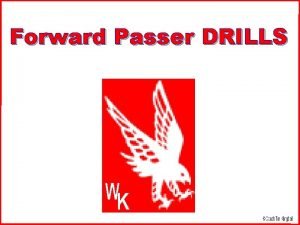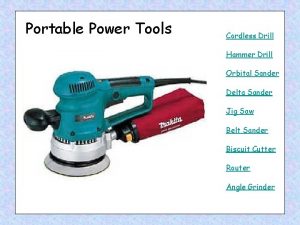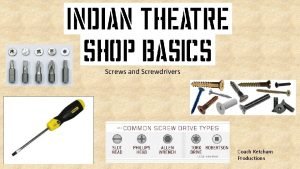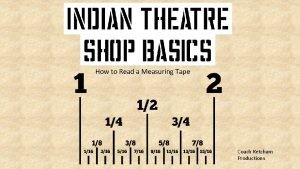Drill Impact Driver and Hammer Drills Coach Ketcham











- Slides: 11

Drill, Impact Driver, and Hammer Drills Coach Ketcham Productions


Drill, Impact Driver, and Hammer Drill What’s the difference?

Drills • A standard power drill rotates the bit using a conceptually simple electric motor. By squeezing the trigger switch, the motor turns on and begins spinning. • The triggers are usually variablespeed, meaning that the more you squeeze, the faster the drilling. Many also have a speed setting allowing you to adjust the top speed/torque depending on the needs. • Some drills sport an adjustable chuck with various settings. When the torque required to turn the bit reaches the setting’s threshold, the clutch disengages the drive shaft from the motor. This stops the chuck from spinning while letting the motor spin free with a click-click. This feature can prevent someone from driving a screw too far into the material and splitting it, as well as help prevent stripping of the screw head.

Impact Drivers • Powered impact drivers also have an electric motor to produce an initial rotation, like a drill. • The motor is much smaller, however, and doesn’t produce as much torque as the drill. The torque comes from additional components – called the hammer and anvil – that kick in once the extra power is needed. • The spinning motor whirls the hammers up to speed, at which point they smack the anvil and transfer all their energy in a sudden impulse. This repeats thousands of times a minute, and adds up to a hefty bit of torque. • Since the energy is built up over time and then delivered in strong impacts, the reverse torque on the users hand wrist is greatly reduced.

Which do I need Drill or Impact Driver Drills Pros • Take all drill bits and drivers • Clutch Drill Cons • Bits can come lose in chuck Both!! Impact Driver Pros • Heavy Duty screws • Less likely to strip bit • Faster than drill • Less slippage on bit Impact Drivers Cons • Only take hexagon shaped bits. • No Clutch • Loud

Hammer Drill • Hammer drills produce a pounding force that makes them extremely efficient at blasting through masonry. As it spins, the bit chisels away at the masonry. The mechanical process that delivers this pounding action is what separates the two tools.

Hammer Drill Tip #1 Keep it clean • The flutes on a drill bit are designed to pull up the debris from the hole as you drill, but the best way to clear the hole is to occasionally pull the bit out of the hole as you're drilling. Less debris in the hole reduces friction, which means smoother drilling, less chance of binding and longerlasting drill bits.

Hammer Drill Tip #2 Avoid overdrilling • Most hammer drills and rotary hammers are sold with a side handle and depth stop. Do yourself a favor and use them. There's no reason to burn up both time and bits by drilling deeper holes than you need to. And you don't always want to drill all the way through a concrete block to its hollow core—some plastic anchors need a back to stop them or they will get pushed right through the hole.

Hammer Drill Tip #3 Don't push too hard • There's a “sweet spot” where the right rpm combined with the right pressure drills fastest. But you won't find that sweet spot by pushing down as hard as you can. In fact, too much pressure will slow the drilling process and put a whole lot of unnecessary wear and tear on the motor gears. Plus, you'll break bits.

Hammer Drill Tip #4 Drill a smaller hole first If you need to drill a couple holes that are larger than the recommended capacity of your drill, start with a smaller hole first. This will significantly reduce the load on the drill. Also, smaller bits don't skate around as much as larger bits do, which is helpful when you need a hole in a precise spot.
 Coach k leadership style
Coach k leadership style Drill symbol
Drill symbol Hand tools
Hand tools Windows driver foundation user mode driver framework
Windows driver foundation user mode driver framework 26108 raceways and fittings
26108 raceways and fittings Mark hammer and associates
Mark hammer and associates Newton's third law hammer and nail
Newton's third law hammer and nail Roles of the coach
Roles of the coach Legal and ethical responsibilities of a coach
Legal and ethical responsibilities of a coach Consider a football coach pacing back and forth
Consider a football coach pacing back and forth Name the intersection of line qz and segment wu
Name the intersection of line qz and segment wu Hanging indention headline in newspaper
Hanging indention headline in newspaper
